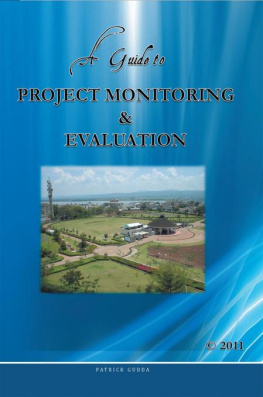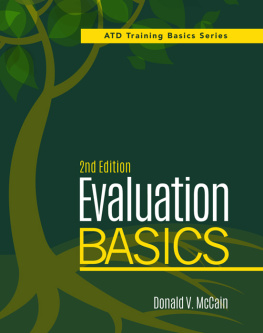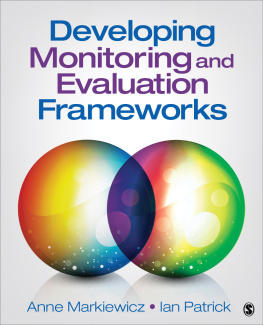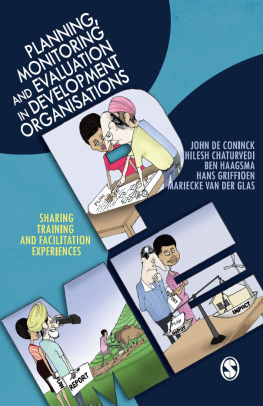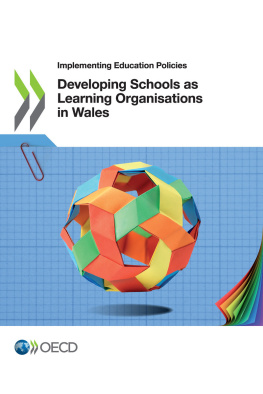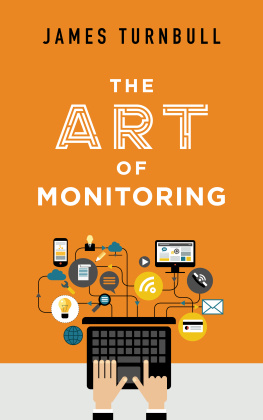A Guide To
Project Monitoring
&
Evaluation
Patrick Gudda

AuthorHouse
1663 Liberty Drive
Bloomington, IN 47403
www.authorhouse.com
Phone: 1-800-839-8640
2011 by Patrick Gudda. All rights reserved.
No part of this book may be reproduced, stored in a retrieval system, or transmitted by any means without the written permission of the author.
First published by AuthorHouse 10/27/2011
ISBN: 978-1-4567-8478-2 (sc)
ISBN: 978-1-4567-8479-9 (hc)
ISBN: 978-1-4567-8480-5 (ebk)
Printed in the United States of America
Any people depicted in stock imagery provided by Thinkstock are models, and such images are being used for illustrative purposes only.
Certain stock imagery Thinkstock.
Because of the dynamic nature of the Internet, any web addresses or links contained in this book may have changed since publication and may no longer be valid. The views expressed in this work are solely those of the author and do not necessarily reflect the views of the publisher, and the publisher hereby disclaims any responsibility for them.
Contents
This book is intended for college students taking courses in project management. It may be used either as a companion volume to a standard text on monitoring and evaluation or as the principal text on monitoring and evaluation or as a principal text in courses oriented largely toward monitoring ; but consultants, who have been in practice for a considerable time, should also find it handy. The purpose of the book is to provide essential practical step-by-step guidelines to designing g and implementing monitoring and evaluation programmes.
The outstanding feature of the book lies in its organization. The chapters are arranged in chronological sequence to correspond to the classic steps in monitoring and evaluation systems. By looking at the monitoring and evaluation steps, the reader is presented with a logical, integrated framework. The principles and ideas expressed herein are relevant to any monitoring and evaluation programme.
I am greatly indebted to the contributions of my colleagues at Jomo Kenyatta University of Agriculture and Technology and the Kenya Institute of Management who have been instrumental in the preparation of this work. I also acknowledge Martin O. Adar for the major design for this book.
Patrick Gudda
MONITORING
INTRODUCTION
Monitoring is the art of collecting the necessary information with minimum effort in order to make a steering decision at the right time. This information also constitutes an important and necessary data base for analysis, discussion, (self-) evaluation and reporting. As a regular and systematic process integrated in the cycle of projects/programmes, monitoring is different from evaluation. The aim is to see if programmes are doing the right thing and are doing it right in order to improve their quality. Monitoring is a continuing function that aims primarily to provide project management and the main stakeholders of an ongoing programme or project with early indications of progress, or lack thereof, in the achievement of programme or project objectives (UNDP, 2001). Monitoring is performed while a project is being implemented, with the aim of improving the project design and functioning while in action.
Bamberger and Hewitt (1986) defines monitoring as: an internal project activity designed to provide constant feedback on the progress of a project, the problems it is facing, and the efficiency with which it is being implemented
The fundamental prerequisite for monitoring is the Annual Work plan and budget of the project. Monitoring enables a manager to identify and assess potential problems and success of a programme or project. It provides the basis for corrective actions, both substantive and operational, to improve the programme or project design, manner of implementation and quality of results. In addition, it enables the reinforcement of initial positive results.
The Power of Measuring Results
If you do not measure results, you cannot tell success from failure.
If you cannot see success, you cannot reward it.
If you cannot reward success, you are probably rewarding failure.
If you cannot see success, you cannot learn from it.
If you cannot recognize failure, you cannot correct it.
If you can demonstrate results, you can win public support.
Through monitoring, a manager is also able to determine whether or not a project continues to be relevant. In this context, relevance refers to whether or not:
The programme or project supports development priorities and donors thematic concerns;
Appropriate groups are being targeted; and
The objectives remain valid in light of any changes in the programme or project environment.
The requirements for effective monitoring are baseline data , indicators of performance and results, and mechanisms or procedures that include such planned actions as field visits, stakeholder meetings and systematic reporting. (Kezsbom, Donald, and Katherine (1989). To emphasize monitoring as an essential management function, monitoring actions must be adequately planned.
Monitoring actions must be undertaken throughout the lifetime of a specific programme or project. In addition, ad hoc studies may be carried out as needed, for example, when an unexpected problem arises for which planned monitoring activities cannot provide sufficient information. The results of such actions may lead to a timely solution rather than waiting for a formal evaluation. Like other monitoring activities, these studies must seek the views of target groups on how to improve the relevance and performance of the programme or project.
According to Bamberger and Hewitt (1986) monitoring and evaluation systems can be an effective way to:
Provide constant feedback on the extent to which the projects are achieving their goals.
Identify potential problems at an early stage and propose possible solutions.
Monitor the accessibility of the project to all sectors of the target population.
Monitor the efficiency with which the different components of the project are being implemented and suggest improvements.
Evaluate the extent to which the project is able to achieve its general objectives .
Provide guidelines for the planning of future projects
Influence sector assistance strategy . Relevant analysis from project and policy evaluation can highlight the outcomes of previous interventions, as well as the strengths and weaknesses of their implementation.
Improve project design. Use of project design tools such as the log frame (logical framework) results in systematic selection of indicators for monitoring project performance. The process of selecting indicators for monitoring is a test of the soundness of project objectives and can lead to improvements in project design.
Incorporate views of stakeholders. Awareness is growing that participation by project beneficiaries in design and implementation brings greater ownership of project objectives and encourages the sustainability of project benefits. Ownership brings accountability. Objectives should be set and indicators selected in consultation with stakeholders, so that objectives and targets are jointly owned. The emergence of recorded benefits early on helps reinforce ownership, and early warning of emerging problems allows action to be taken before costs rise.
Show need for mid-course corrections. A reliable flow of information during implementation enables managers to keep track of progress and adjust operations to take account of experience
The relation between Monitoring and Planning
Next page
